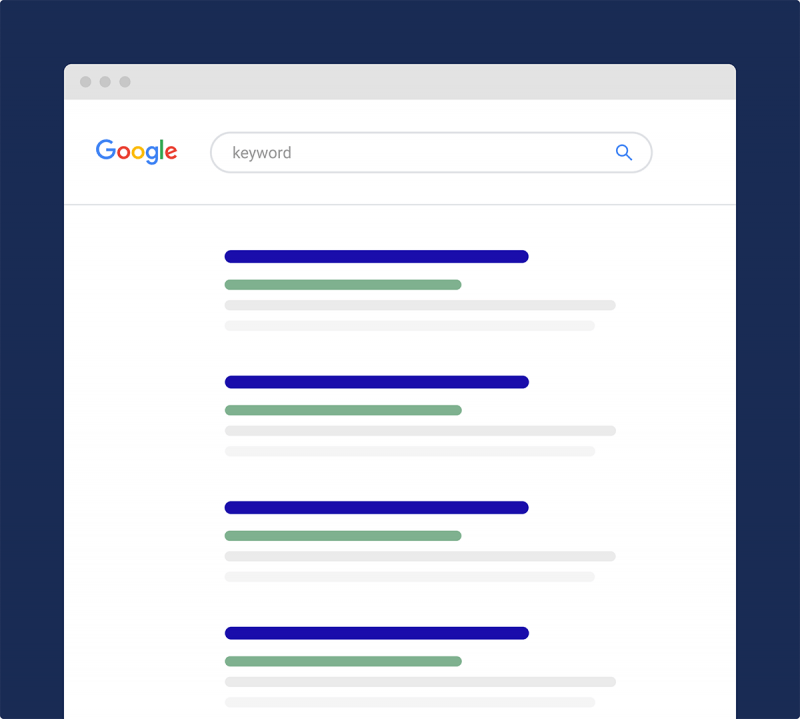As relevant content delivery becomes more and more important for ranking high in the search engines, strategies such as using high keyword density are likely to become less important than delivering natural-looking, well-organized, and quality content to visitors. In August of 2009, the Google patent application stated that they were in the process of developing a human review strategy to determine which sites would rank highest on the search engine results pages. This is why it’s crucial to learn what criteria they’ll be using to determine which websites are most relevant and to structure your site and your content accordingly.
What Does the Future of SEO Hold?
In 1993, Google purchased a company called ”Applied Semantics” and have since then been attempting to develop an algorithm that can identify what a human would consider being relevant and natural-sounding content. While the algorithms remain a secret, possibly because they aren't yet determined, we do know some things about the process of how web content is being analyzed. It’s a strategy called latent semantic indexing (LSI). The basic strategy of LSI is to identify the theme of the site and to determine whether or not a site is providing content that is relevant to that theme and which will be valuable to human readers.
The search engines accomplish this by gathering all of the information and content across the Internet which is related to that theme and looking for words and phrases which are commonly used when talking about that theme. This then determines the standard by which they will measure the value and relevance of the individual site. For example, if the theme of your website is “healthy weight loss,” the value and relevance of your site's content will be compared to the structure of content about healthy weight loss across the entire internet.
So if the content of your site does not contain other words or phrases which are relevant to healthy weight loss, but instead has a bunch of fluff with a high keyword density for the term “healthy weight loss,” it’s considered (according to LSI standards) to not be as relevant. Google, Yahoo!, and MSN are moving away from keyword density and towards LSI, which means that the upcoming human review process will likely involve LSI.
SEO experts are speculating that will be LSI used to determine which sites are most relevant for certain categories, and that out of that pool of results, human beings will be reviewing the sites to determine which will rank highest in the search engine results pages. So what could this mean for your onsite content creation strategies? It means using a clear cut strategy to structure your website and to create your content…
Focusing Content With Silo Structure
Silo structure is a website structuring strategy that helps you focus your website theme and content for higher search rankings. Using this structure also makes it simple to create a website where you can easily organize your content and make it easier for your visitors to find what they want. A silo structured website categorizes the subthemes of your website in such a way that all of the content in each category supports that category’s main theme. This content focusing keeps the subthemes of your website from bleeding over into one another and thus diluting their relevance. For example, if the main theme of your site is a personal finance, your subthemes might be:
1. Personal Finance Categories
2. Getting out of Debt
3. Building Wealth
4. Understanding Insurance
5. Retirement Planning
6. Investment Literacy
A good silo structured website would contain six pages that covered these subcategories and the content will be specifically focused on only the main theme. In other words, the pages and articles on building wealth wouldn’t be diluted with information about understanding insurance or retirement planning. Instead, the content in each subcategory would be strongly focused to support the main theme. Good examples of silo structured websites are, www.ehow.com, www.wikipedia.org, and www.about.com.
Deliver Content Quality Over Keyword Density

While it is still important to focus on having a 1 to 3% keyword density, begin focusing your content creation on quality and relevance as the primary goal. It’s better to spend a few hours writing a great article (or spend a little more money hiring a good writer to write one) than it is to pound out dozens of keyword-soaked articles that people aren’t going to read when they find them. While some companies might have managed to rank high by providing large quantities of content, the Internet has now become diluted with fluff that people aren’t interested in reading.
If the search engine companies don't develop a solid method for weeding out the “trash” content, people will probably stop using the search engines to find the content they want. So companies who focus on having a well-structured website where the content is well organized, relevant, and informative will likely be the only ones ranking high in the SERPS in the near future.
Conclusion
Slow is fast when it comes to good SEO. Instead of being in a hurry to post a lot of websites or pages and pages of content, take a look at the quality of your structure and of your content and start preparing for the what the future of SEO holds.
Other Articles on Site Structure and Content Creation
What About Duplicate Content?
Keyword Selection
Determining Your Site's Theme
